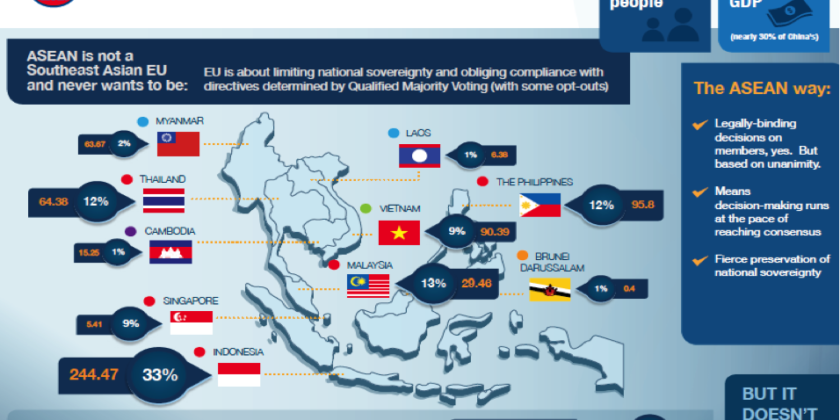12 Points, to sum up, ASEAN Community
- The center of the global economic gravity is shifting towards Asia. Within Asia, it is more aligned towards the giant economies of India and People’s Republic of China. The emergence of these economies suggests that economic size bestows a great significant advance to accelerate and foster the development.
- The ASEAN has created a single big market and production base, called as ASEAN Economic Community that allows the goods free flow, investment, skilled labors, services and free movement of capital across the region as well.
- If ASEAN was a single economy then it would have been the seventh largest nation in the world, combining the growth of products to 2.4 trillion in 2013. It is deemed to become fourth largest by 2050 if the growth trend continues to be the same.
- With more than 600 million populations, ASEAN’s potential market is larger than North America and the European Union. It stands next to People Republic of China and India as an emergent largest labor force that is relatively young.
- ASEAN is one of the most open economic regions all around the world and its total merchandise of exports is over $1.2 Trillion which is nearly 54% of the total ASEAN GDP and accounts 7% of global exports.
- ASEAN community has been taking a more cautious approach to regional economic integration than Europe. In Asia, there is currently no serious talks and considerations about single currency.
- The ASEAN Economic Community was founded on 4 basic initiatives of creating a single market for B2B and production base, promoting equitable economic development, increasing competitiveness and integrating it with Global Economy.
- ASEAN’s physical infrastructure is important to critical ASEAN economic community’s goal of establishing a single market.
- One of the biggest challenged to ASEAN Economic Community is to bridge the perceived development division between the older and economically advanced members including Malaysia, Philippines, Brunei, Singapore and Thailand to the new member that include Cambodia (1999), Lao People’s Democratic Republic (1997), Myanmar (1997), and Viet Nam (1995).
- Some analysts believed that ASEAN Economic Community will miss its December 2015 deadline due to the challenging requirements of economic integration. It also included constitutional changes and changes to the domestic laws.
- The flexibility that characterizes ASEAN cooperation, the celebrated ASEAN way might hand its member states a convenient excuse of noncompliance. How to enforce the decided accords might remain an issue, but the current economic integration commitments lack the sufficient mechanism to ensure full compliance.
- ASEAN require a plan that is beyond and greater than ASEAN Economic Community to achieve its long term development aspirations for the 10 member countries. It may include an introduction of structural reforms nationally, bold actions to be taken to deepen economic integration regionally and others.
ASEAN or the famous Association of Southeast Asian nations was formed in 1967 with a primary objective of creating mutual beneficial relationship amongst the members. It also aims to create stable political and economic environment within the region.
